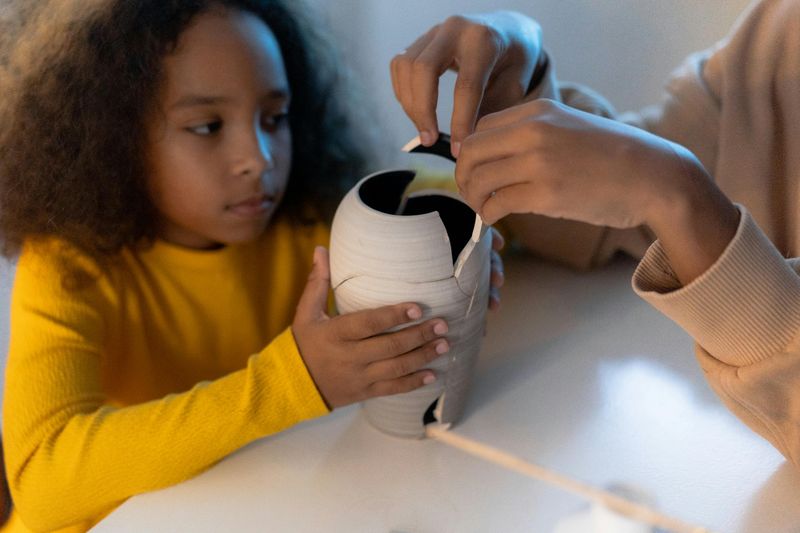11 Things to Say Instead of Losing Your Temper with Your Kids

Parenting can push even the calmest person to the edge. Those moments when your child has drawn on the wall, refused to get dressed, or is having their third meltdown of the day can test your patience to its limits. But how we respond in these heated moments shapes our relationship with our children and teaches them how to handle their own emotions. Instead of yelling or saying things you might regret, try these alternatives that keep the lines of communication open while still setting necessary boundaries.
1. Take a Moment to Reset

“I need a moment to calm down, and then we’ll talk.” These simple words create a powerful pause button in heated situations. When you feel that familiar surge of anger rising, this phrase gives you permission to step back before reacting.
Children learn more from what we do than what we say. By modeling self-regulation, you’re teaching your child a valuable life skill they’ll carry into adulthood. This small break interrupts the emotional escalation that often leads to regrettable words.
The beauty of this approach is its honesty. You’re not pretending the problem doesn’t exist—you’re acknowledging your emotions while demonstrating responsible management of them. This builds trust and shows respect for both yourself and your child.
2. Validate Their Feelings First

“I can see you’re upset. Let’s take a deep breath together.” This powerful statement acknowledges your child’s emotions before attempting to address behavior. Children often act out because they lack the vocabulary to express complex feelings.
The invitation to breathe together creates an immediate physical connection that can defuse tension. This shared activity signals that you’re in this together, not opponents in a battle. Your child learns that all emotions are acceptable, even if certain actions are not.
When you validate feelings first, resistance often melts away. Children who feel understood are more willing to listen to guidance. This approach builds emotional intelligence and teaches healthy coping mechanisms that will serve them throughout life’s challenges.
3. Open the Door to Communication

“I’m listening. Can you tell me what’s going on?” These words create a safe space for your child to express themselves without fear of judgment or interruption. Often, children act out because they feel unheard or misunderstood.
When you pause to truly listen, you shift from reactive parenting to responsive connection. Your body language matters here too—getting down to their eye level and giving full attention communicates that their thoughts matter to you. This simple act builds trust that can prevent future meltdowns.
Remember to listen without planning your response. Children can sense when we’re just waiting for our turn to speak rather than truly hearing them. The insights gained from genuine listening often reveal the root causes of behavior problems that punishment alone can’t solve.
4. Separate Behavior from Identity

“I love you, but I don’t like this behavior.” These words draw a clear line between who your child is and what they’ve done. Children often internalize criticism, believing they are bad when they make mistakes.
This phrase reassures your child that your love remains constant even when you’re disappointed in their choices. The distinction helps develop a healthy self-image where they understand they can make poor decisions without being a poor person. Your unconditional love provides the security they need to grow and learn.
Using this approach consistently teaches children to evaluate their own actions objectively without harsh self-judgment. They learn to say to themselves, “I made a mistake” rather than “I am a mistake”—a crucial difference that builds resilience and emotional health.
5. Invite Problem-Solving Partnership

“Let’s figure out a better way to handle this.” With this invitation, you transform a potential power struggle into a collaborative learning opportunity. The word “let’s” is particularly powerful—it signals that you’re facing this challenge together rather than imposing a solution.
Children who participate in problem-solving develop critical thinking skills and gain confidence in their ability to handle difficult situations. They’re also more likely to follow through on solutions they helped create. This approach respects their growing autonomy while providing the guidance they still need.
Start by asking open-ended questions: “What do you think could work better next time?” Even young children can contribute meaningful ideas when given the chance. Their suggestions might surprise you with their wisdom and creativity.
6. Offer a Fresh Start

“Can we try that again in a calmer way?” These words offer the precious gift of a do-over without shame or blame. Everyone makes mistakes, especially children who are still learning emotional regulation.
The beauty of this approach lies in its forward-looking perspective. Rather than dwelling on what went wrong, it focuses on the opportunity to practice getting it right. Children learn that mistakes aren’t permanent failures but stepping stones to better skills.
This reset button works wonders for both minor infractions and bigger upsets. It models forgiveness and the growth mindset that will serve them throughout life. Next time voices start rising or tears start flowing, try offering this gentle invitation to begin again—you might be amazed at how quickly the atmosphere changes.
7. Offer Reassurance During Challenges

“I know this is hard. We’ll get through it together.” These words acknowledge the struggle while offering the comfort of companionship. Children often feel overwhelmed by emotions or situations that adults find manageable.
The first part validates their experience without dismissing it or telling them to “just get over it.” This validation helps children feel understood rather than judged for their struggles. The second part reminds them they’re not alone in facing challenges.
This phrase works equally well for homework frustrations, friendship troubles, or learning new skills. It builds resilience by teaching that difficulties are temporary and surmountable with support. Your presence and partnership provide the emotional safety net they need to face challenges with courage rather than avoidance.
8. Model Emotional Honesty

“I’m frustrated right now, but I still care about you.” These words demonstrate authentic emotion while maintaining connection. Parents sometimes feel they must hide negative feelings to protect their children, but honest expression teaches valuable lessons.
By naming your emotion, you help your child develop emotional vocabulary and awareness. They learn that all feelings are acceptable and can be expressed appropriately. The second part of the statement ensures they don’t feel rejected because of your temporary emotional state.
This approach prevents the confusion children feel when parents deny obvious emotions. They learn to trust their emotional perceptions and develop confidence in navigating relationships. Your example shows them how to express difficult feelings without damaging connections—a skill many adults still struggle to master.
9. Encourage Accountability with Support

“What can we do to fix this situation?” This question gently guides children toward taking responsibility while offering partnership in finding solutions. Unlike blame-focused questions like “What were you thinking?”, this approach looks forward rather than backward.
The collaborative framing acknowledges that mistakes happen to everyone. Your child learns that making amends is more important than avoiding consequences. This builds moral courage and integrity rather than fear of punishment.
Even young children can participate in brainstorming solutions. A child who breaks a sibling’s toy might suggest saving allowance to replace it or making a special drawing as an immediate gesture of regret. These experiences develop empathy and repair skills that strengthen all their relationships.
10. Create Space for Cooling Down

“Let’s take a break and come back when we’re ready.” This phrase acknowledges that sometimes emotions run too high for productive conversation. Creating intentional space prevents words that can’t be taken back.
Unlike traditional time-outs that feel punitive, this approach includes both parent and child in the cooling-off period. It teaches that stepping away from conflict temporarily is a strength, not a weakness. Children learn to recognize when they need space to regulate their emotions.
The key is returning to address the issue once everyone is calmer. This follow-through shows that problems don’t disappear when ignored but can be solved more effectively with a clear head. Over time, children internalize this process and develop the habit of pausing before reacting—a valuable life skill.
11. Acknowledge Positive Efforts

“Thank you for trying to listen. That means a lot.” These words recognize effort over perfection, catching your child doing something right even during difficult moments. Children thrive on positive reinforcement, especially when they’re struggling with big emotions.
This acknowledgment helps shift the interaction from correction to connection. Your child feels seen for their attempts rather than just criticized for their shortcomings. This builds motivation to keep trying even when self-control is challenging.
The phrase works even when the attempt was small or imperfect. A child who stops screaming but continues pouting is still making progress worth recognizing. By highlighting these small victories, you create a pathway of success that encourages continued growth rather than discouragement and giving up.

Comments
Loading…